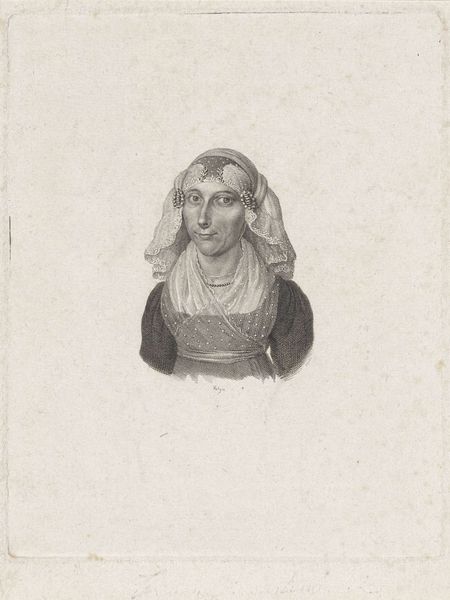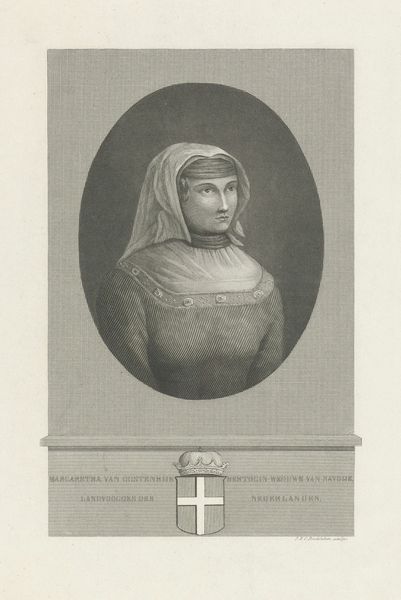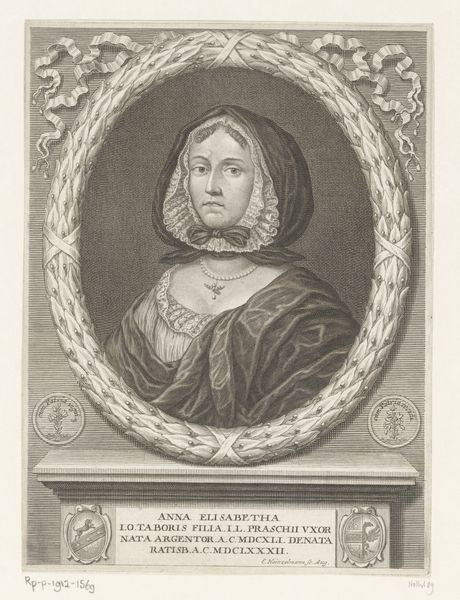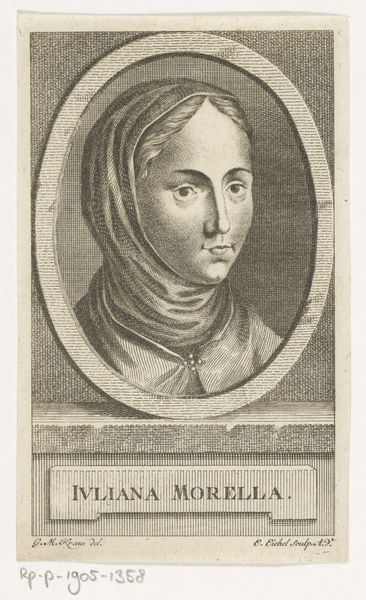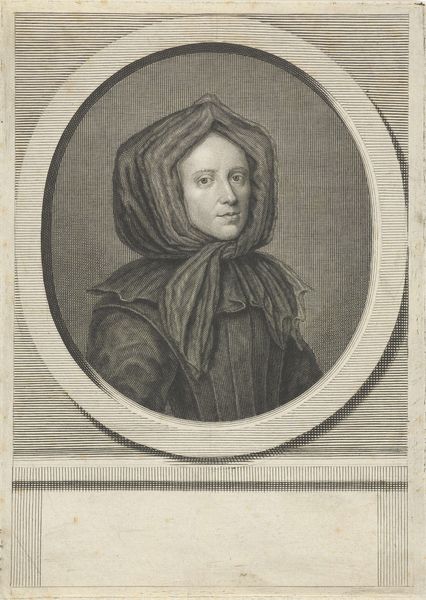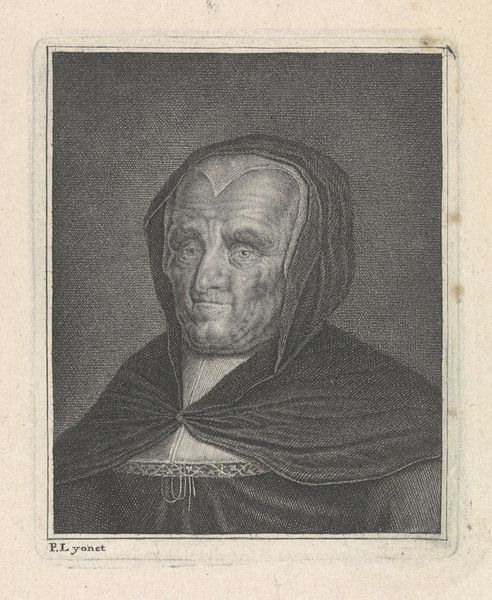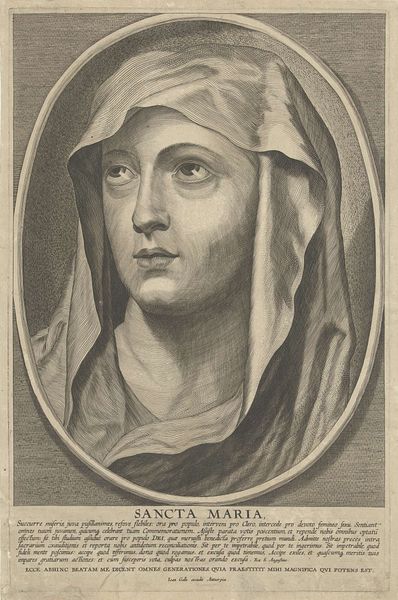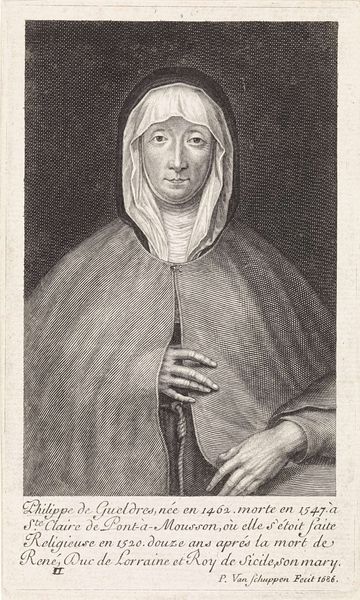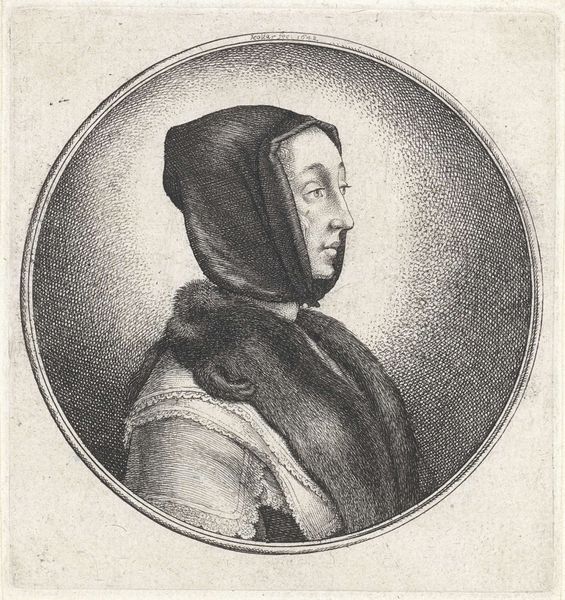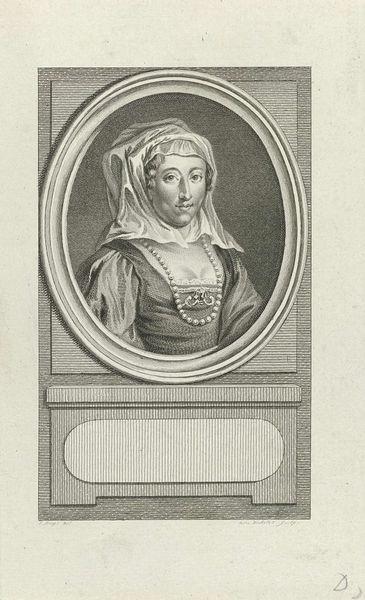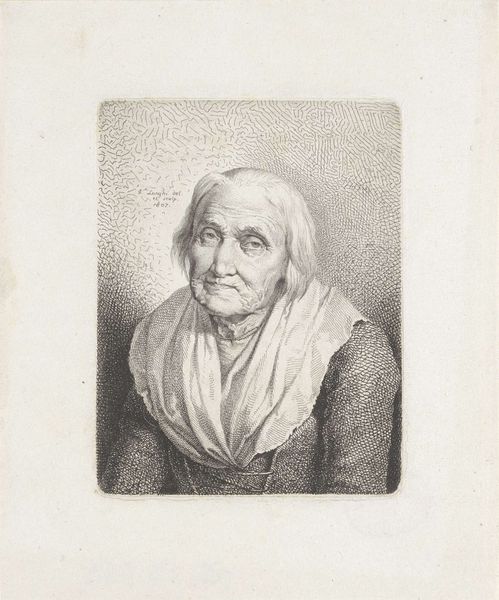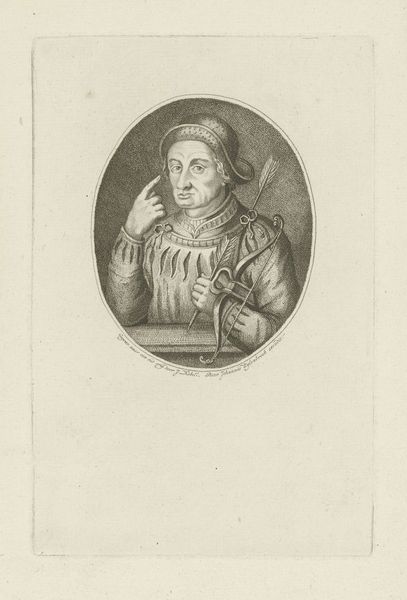
engraving
#
portrait
#
neoclacissism
#
pencil sketch
#
form
#
pencil drawing
#
line
#
history-painting
#
engraving
#
realism
Dimensions: height 191 mm, width 130 mm
Copyright: Rijks Museum: Open Domain
Pietro Becceni produced this portrait of Francesco Petrarca as an engraving, sometime between 1755 and 1829. The image revives Petrarch, the 14th-century scholar credited with founding Renaissance humanism, at a time when Europe looked to classical antiquity for models of moral and political order. Becceni, working in the late 18th or early 19th century, would have found himself surrounded by institutions – academies, museums, and schools – devoted to preserving and celebrating artistic genius. It was also the age of revolution, which produced a new kind of public art promoting republican virtues. Petrarch’s poetry and philosophy gained renewed importance amidst the political upheaval. His emphasis on individual experience, his critical approach to tradition, and his celebration of human potential resonated with Enlightenment ideals. Looking at this image, we can ask what role it may have played in shaping the cultural and political consciousness of its time. To truly understand the history of this image, we would look at the artist’s life, the place and date of publication, the historical context, and the cultural meanings that would have been attached to it.
Comments
No comments
Be the first to comment and join the conversation on the ultimate creative platform.
